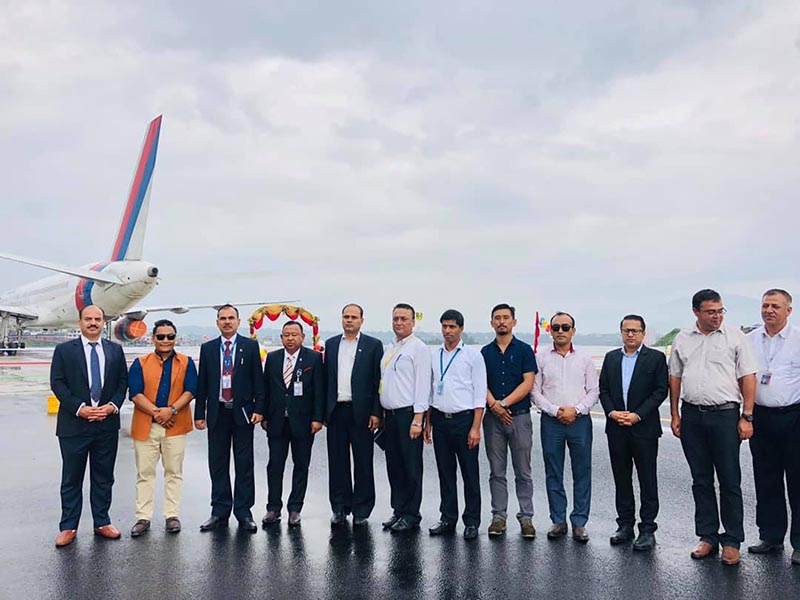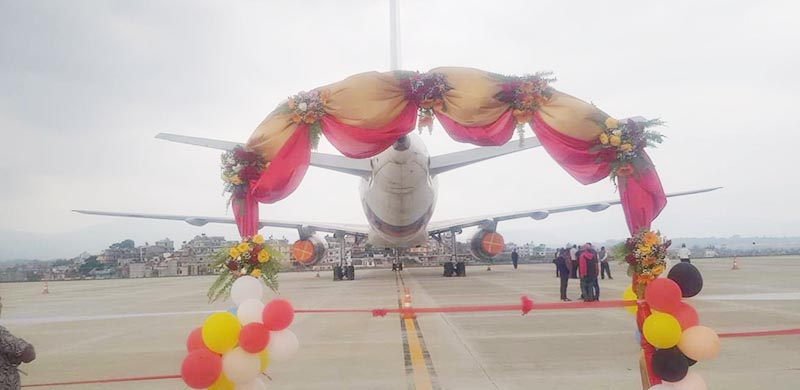Rs 50-cr remote parking bay inoperative
Kathmandu, July 8
A remote parking bay with two aircraft stands for B777 or identical aircraft and another two for smaller ATR72 to the east of the runway at Tribhuvan International Airport is unlikely to augment the capacity of the sole international airport at the moment, although it has cost TIA Rs 50 crore.
TIA is served by nine operational international aircraft parking stands, only three of which can accommodate wide-body jets like B777 and A330, technically implying that the parked aircraft can be serviced for a turnaround typically within an hour by its authorised ground handling agency, Nepal Airlines Corporation.

The remote bay was recently inaugurated by the newly appointed director general of Civil Aviation Authority of Nepal and announced open for business.
Airlines operators, however, claimed that the remote stand constructed at a cost of nearly Rs 50 crore and designed to accommodate two wide-body aircraft, cannot be considered an operational stand technically as the sole ground handling agency doesn’t have necessary resources to service passenger flights, if they were to be parked at the said stands, let alone during peak hours.
“This is because of NAC’s inability to permanently depute several types of specialised aircraft ground handling equipment, including push-back tractors, high-loaders, aircraft boarding stairs and air conditioned passenger boarding buses at the remote stand to efficiently service the aircraft,” a high-level official at TIA confirmed.

NAC’s limited ground handling resources cannot be marshalled across the active runway due to safety concerns while the condition of the access road to the remote stand is also not up to the mark for efficient movement of necessary ground handling equipment, a senior manager at NAC admitted.
This case clearly shows that CAAN — the operator of TIA and NAC — and the ground handling agency are never on the same page though NAC’s managing director is on the CAAN Board. It utterly defies common sense as to why CAAN management never asked NAC to prepare for operations from remote stands, even when it first set out to construct the remote bay two
years ago, an international airlines operator told THT. “As a result of defective planning by its top executives, the new bay’s operations were condemned to commence with hosting NAC’s decrepit B757 jets awaiting dismantling,” he added.
Clearly, the parking charges being collected by CAAN for old jets are peanuts compared to heavy investment incurred for its construction, especially when CAAN airport charges regulations allow for only 25 per cent parking charges for un-airworthy aircraft.
“Wide-body aircraft stands generate revenue for airports by hosting wide-body jet operations for typically an hour that turn around to make way for next flight whose timings are precisely coordinated so as to maximise the airports throughput,” an aviation engineer explained.
For CAAN, efficiency and return on investment have taken a back seat since inception, with focus remaining on capital expenditure on sub-standard works that necessitate frequent maintenance so as to provide a source of consistent kick-backs to those in approving positions, a CAAN director told THT.






